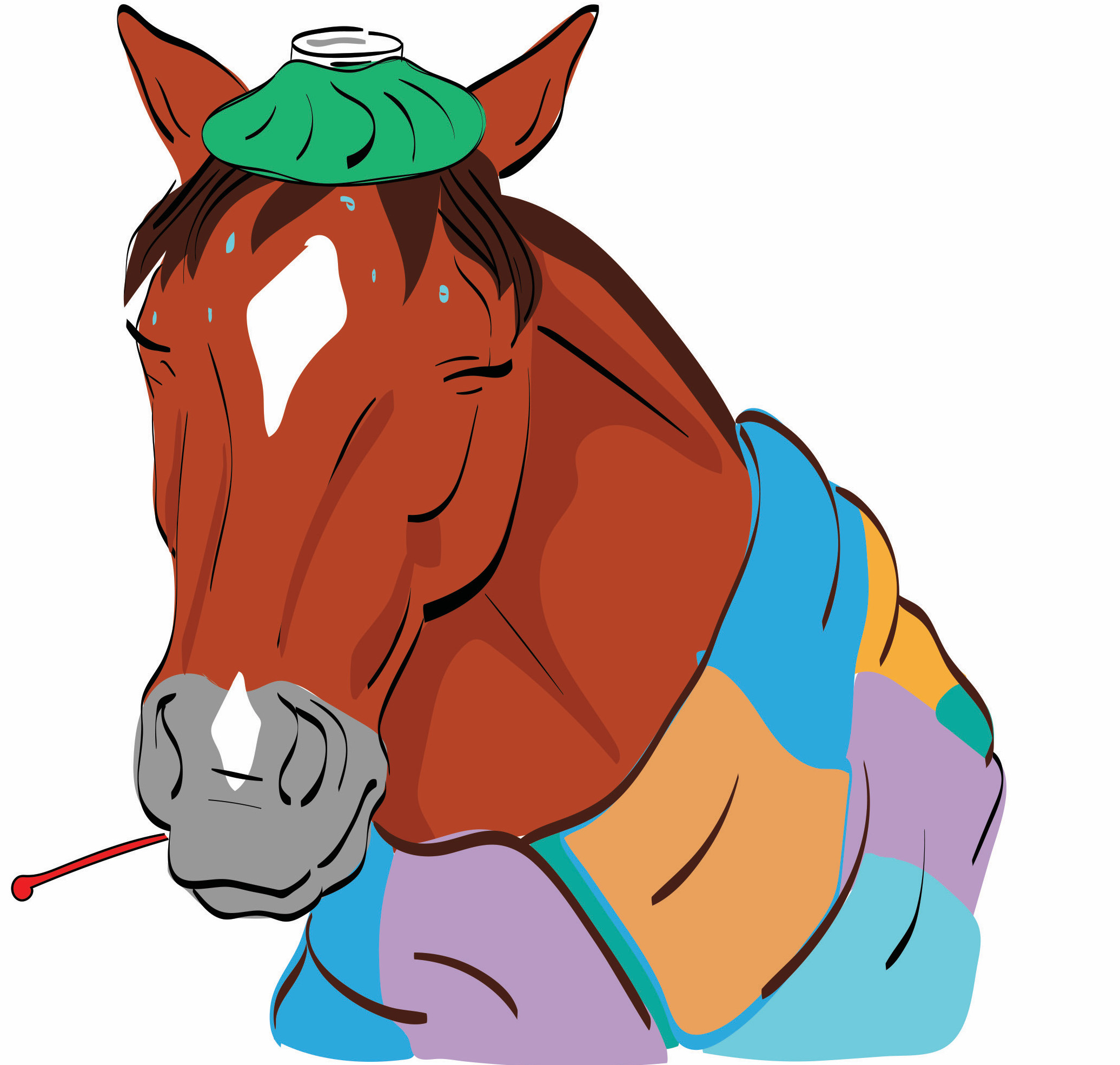
1. Which of the below is true regarding “choke” (a blockage in the esophagus that makes it difficult or impossible for your horse to swallow)?
A) It will likely resolve on its own.
B) It primarily afflicts young horses.
C) It requires an immediate vet visit.
2. True or false: Whether a laceration requires an emergency visit is one of the least difficult decisions for your vet to make with information over the phone.
T / F
3. True or false: Signs of colic can be as subtle as mild depression, disinterest in food, and reduced manure output over several days’ time.
T / F
4. True or false: A complicated foaling always justifies a lights-and-siren response from your vet.
T / F
HOW’D YOU DO? (Answers below.)
1. A is correct. The majority of chokes will resolve on their own, often in a fairly short period of time. And even if your horse is choked for several hours, he’s likely to be fine. Although a choke episode may eventually require a visit from your veterinarian, there’s no reason to panic when it starts. Call your vet to let him or her know what’s going on and get advice, but don’t expect a “911 response.”
[THE 10 MOST common horse emergencies…and when to call the vet.]
2. F is correct. Lacerations can actually be a hard call. It there’s blood spurting from the wound or severe lameness, then of course immediate attention is necessary. But in other cases it can be difficult to decide if an emergency visit is called for. For this reason, one of the most useful things you can do is take a picture of your horse’s wound with your phone’s camera and text it to your vet to examine as you talk with him or her. This helps your vet determine if the wound’s location makes it dangerous, or whether it requires sutures.
3. T is correct. Always call your vet even if mild signs make you suspect colic might be at the root of your horse’s symptoms. An immediate visit may not be necessary, but alerting your vet and getting input early on can make a difference in the outcome later. Be prepared to answer questions about your horse’s condition and provide basic vital signs such as his heart rate and whether you can hear gut sounds.
4. T is correct. Foaling problems are always a red-alert emergency, and even a few minutes’ time can mean the difference between life and death for the foal. With a normal foaling, you’ll see or hear fluid coming from your mare’s vulva, followed by the amniotic sac—the translucent bag of tissue that precedes the foal. If the foal isn’t making his way into the world within 10 minutes after that, summon your vet.
Hey! Not already receiving H&R’s fun and informative newsletter? Sign up right now for The Ride. It’s free!






